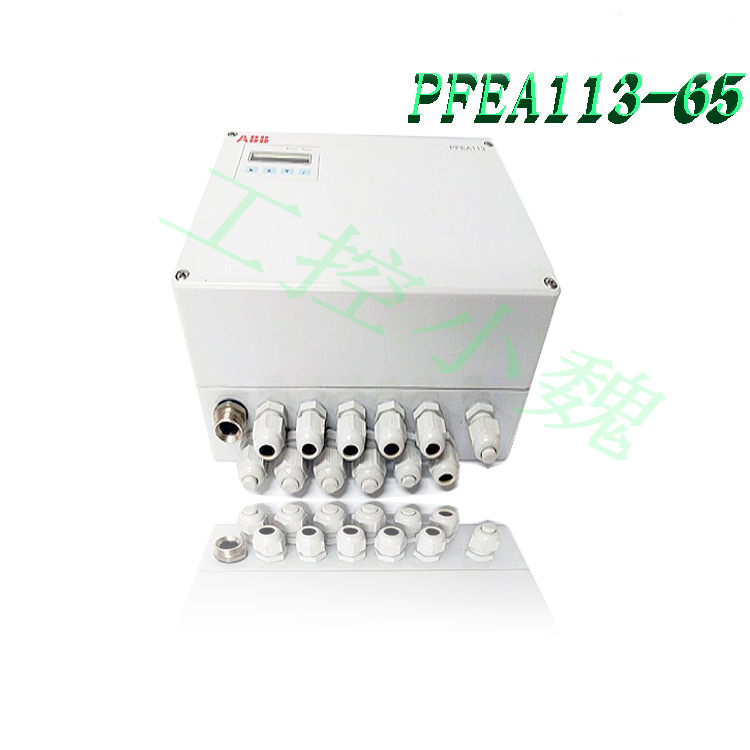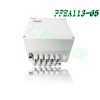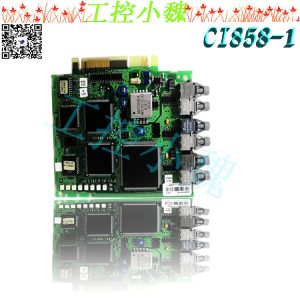Description
Many products have not been listed yet. For more products, please contact us
If the product model is inconsistent with the displayed image, the model shall prevail. Please contact us for specific product images, and we will arrange for photos to be taken and confirmed in the warehouse
We have 16 shared warehouses worldwide, so sometimes it may take several hours to accurately return to you. We apologize for any inconvenience caused. Of course, we will respond to your concerns as soon as possible.
PFEA112-65 3BSE030369R0065 Other names:
Tension spare parts PFEA112-65 3BSE030369R0065
PFEA112-65 3BSE030369R0065 Tension amplifier
Tension control unit PFEA112-65 3BSE030369R0065
The PFEA112-65 3BSE030369R0065 tension controller module is a system component used to control material tension, typically based on specific technologies and designs to ensure stability and reliability in various industrial applications.
Has the following characteristics:
Tension control: The main function of this controller is to monitor and adjust the tension of materials, ensuring that the materials do not become excessively loose or tight during the production process, thereby improving the stability and quality of the production line.
Control Algorithm: The controller is equipped with complex control algorithms that can automatically adjust system parameters based on real-time tension data to achieve stable tension control.
Sensor Interface: Tension control typically requires the connection of a tension sensor for real-time measurement of material tension. These sensors exchange data with the controller to provide real-time data support for control algorithms.
User interface: The controller may have a user interface where operators can monitor the status of the controller, adjust parameters, and troubleshoot.
Communication interface: The controller supports data exchange with other control or monitoring systems, facilitating automated production and monitoring.
Alarm and safety functions: Tension controllers can usually monitor abnormal situations, such as material breakage or material tightness, to trigger alarms or safety operations, ensuring production safety..jpg)
Safety and reliability: The tension controller module usually has a high degree of safety and reliability to ensure the stability and safety of industrial processes. They comply with industrial standards and regulations, and can operate stably under various environmental conditions.
Sensor Interface: The tension controller module usually has an interface that can connect tension sensors to measure tension values. These sensors provide real-time tension data feedback to the controller module for precise control.
Programmability: Many tension controller modules allow users to configure and program to meet specific application requirements. Users can set tension thresholds, control algorithms, and other parameters to adapt to different material and process requirements.
Working principle: The working principle of the tension controller module is usually based on the action of the coil and magnetic powder. When the coil is energized, the magnetic powder generates a magnetic flux under the action of magnetic field lines, causing the output shaft and input shaft to become rigid bodies and rotate. By controlling the input current, the output torque can be changed, thereby achieving control of material tension..jpg)
Application field: The tension controller module is widely used in various industrial fields, including textile, papermaking, printing, packaging and other industries. They can precisely control the tension of yarns, paper, printing screens, and packaging materials, improving product quality and production efficiency.
In addition, the specific specifications of PFEA112-65 include an input voltage range of 12-48VDC, an output voltage range of 5VDC, a maximum output current of 10A, an efficiency greater than 90%, a size of 170mm x 105mm x 32mm, a weight of approximately 120g, an operating temperature of -20 ° C to+50 ° C, a storage temperature of -40 ° C to+70 ° C, an environmental humidity of 5% to 95% relative humidity (without condensation), and the use of a 32-bit RISC processor. In addition, the tension controller module can also be classified according to different circuits, such as open-loop, closed-loop, or free loop tension control systems. According to the monitoring methods for different coils, they can also be divided into types such as ultrasonic waves, floating rollers, and tracking arms. These different types of tension controller modules are suitable for different application scenarios and requirements.
All products on this website are special products, and market prices have been fluctuating,
The specific customer service quotation shall prevail, as the product is a new product and the price is not genuine,
Please confirm the model, product, price, and other detailed information with customer service before placing an order. The website has been used,
The new one is for sale, please contact customer service to communicate.
Model recommendation:
PFEA111-20 Tension controller
PFEA111-20 3BSE050090R20
PFEA111-65 3BSE028140R0065
SPFEC12 processing module
PFEA112-20 Tension controller
PFEA112-20 3BSE030369R0020
PFEA112-20 3BSE050091R20
PFEA112-20 3BSE050091R20 3BSE030369R0020
PFEA111-IP65
KT ELECTRIC KTE-PFC REV-1.2 IO
PFJ-T081U
PF3S-T32K
PF3S-HSC1
PF3S-BP13
PFTL101BE 2.0KN 3BSE004214R1
PFTL101BE 2.0KN
PFEA112-65 Tension controller
VMIVME-5565-010000
More……



-100x100.jpg)
-100x100.jpg)
-300x300.jpg)
-300x300.jpg)

-300x300.jpg)
admin –
Sensor Interface: Tension control typically requires the connection of a tension sensor for real-time measurement of material tension. These sensors exchange data with the controller to provide real-time data support for control algorithms.
User interface: The controller may have a user interface where operators can monitor the status of the controller, adjust parameters, and troubleshoot.